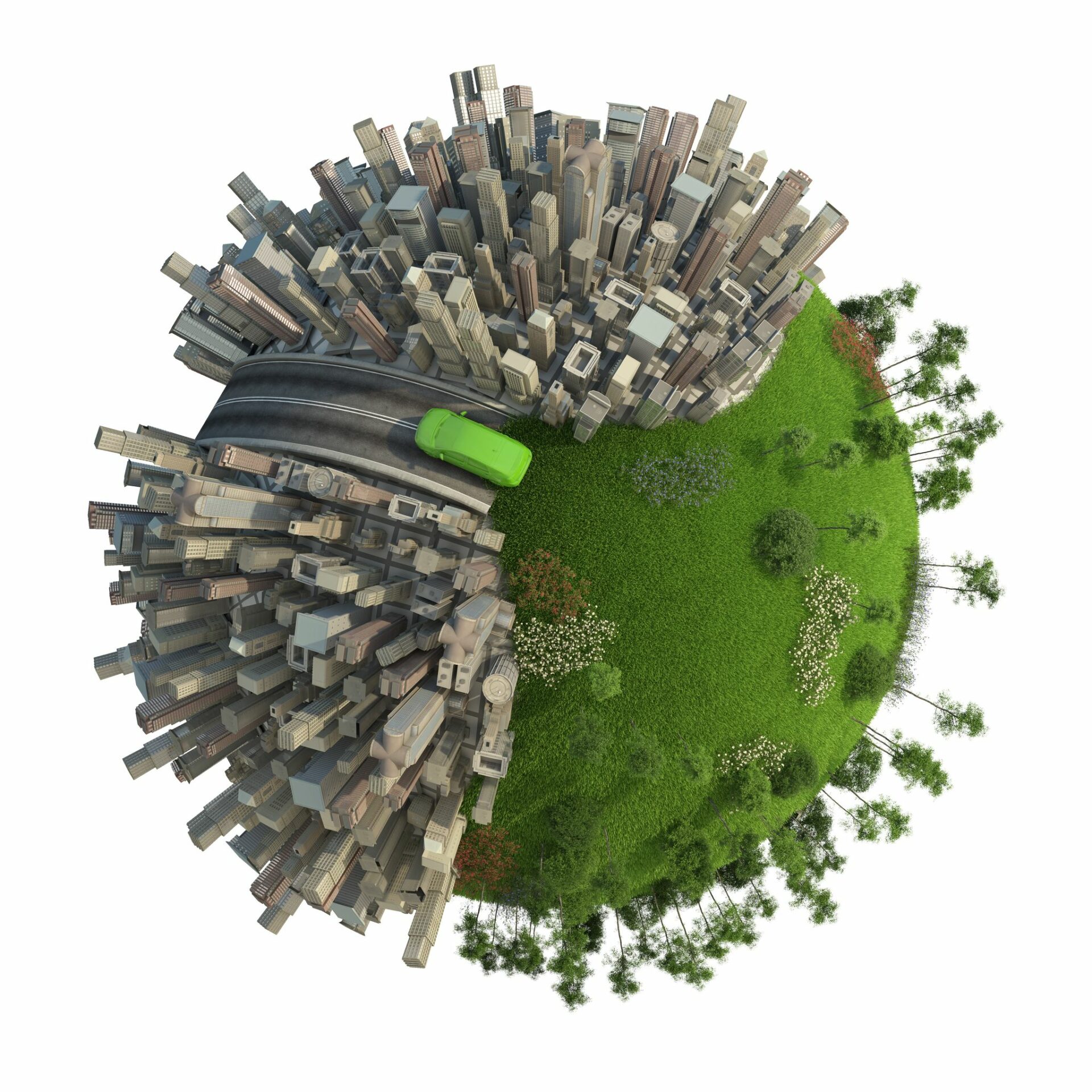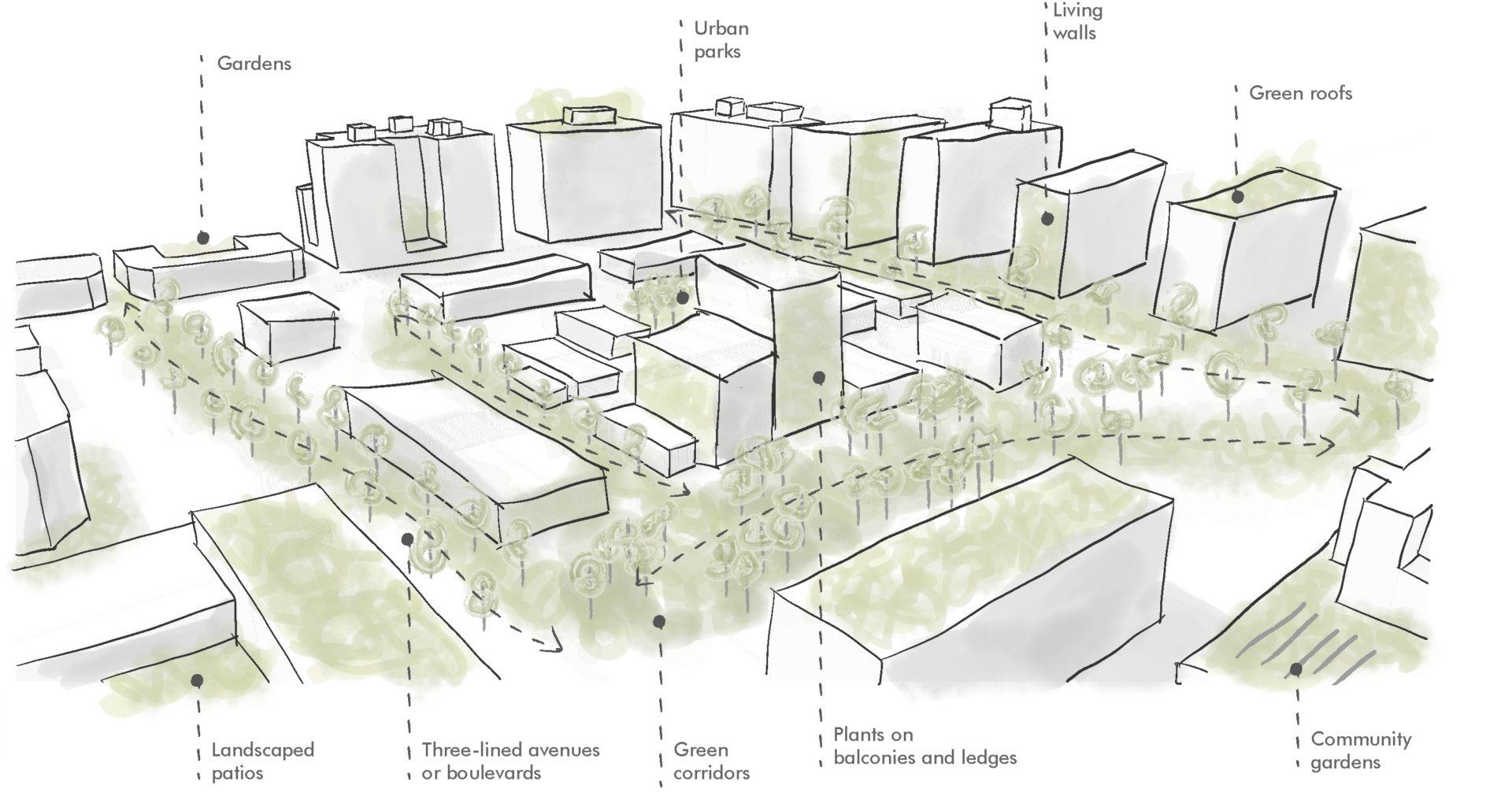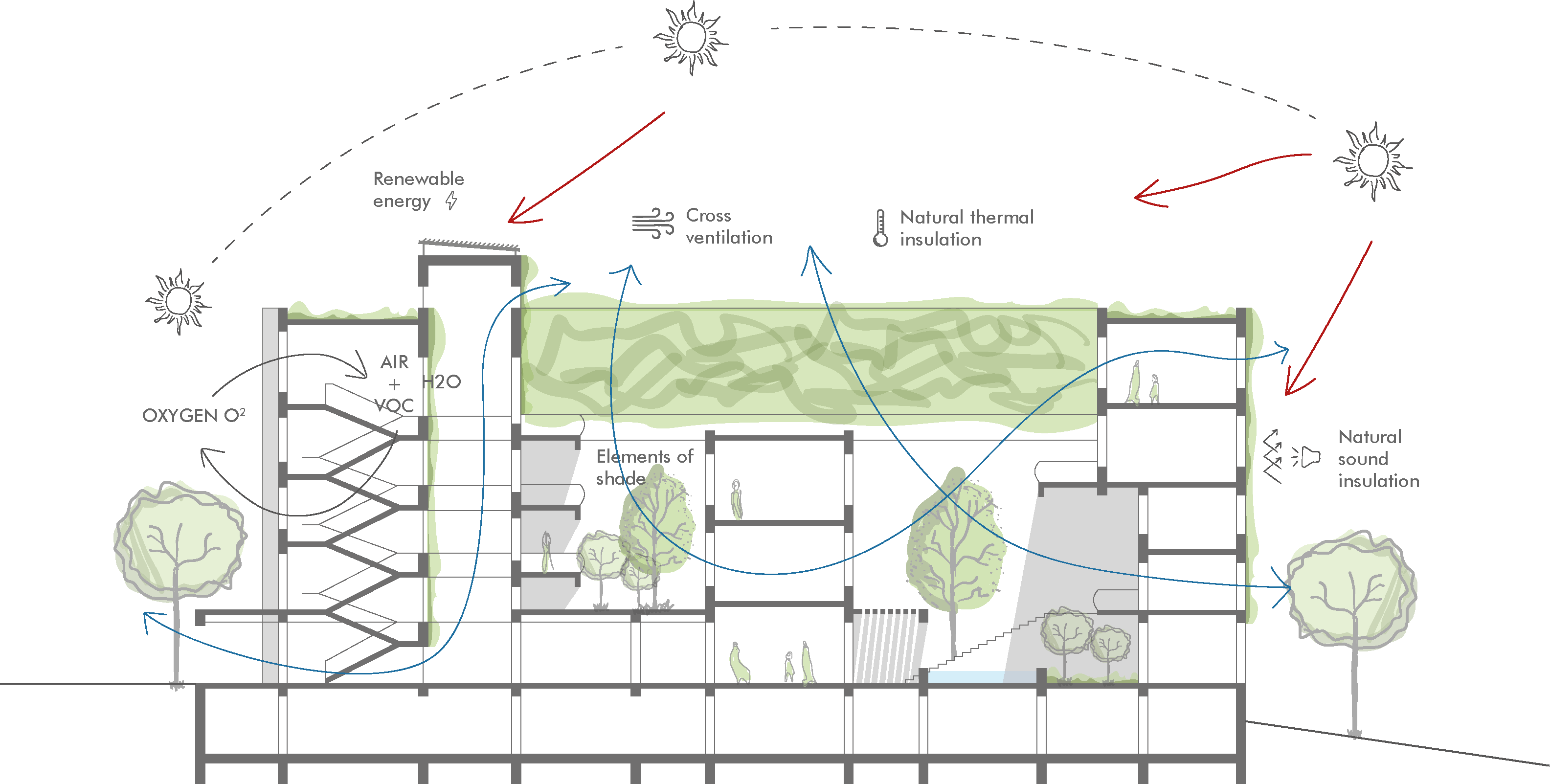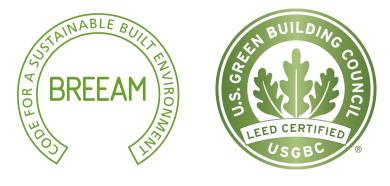CLIMATE CHANGE VS. #GOGREEN
By 2025, the FAO estimates that more than half of the world’s population will live in cities unprepared for such uncontrolled growth. New strategies are needed to combat the nature-city imbalance.
Urban greening systems emerge as an opportunity to effectively mitigate many of these problems, which also have a direct impact on climate change.
URBAN GREENING
This involves recovering the space that nature has lost in the city, in order to combat the problems caused by urban development.

Nowadays, this concept is seen on an increasingly larger scale, and we speak of Urban Green Infrastructures (UGI). The incorporation of elements such as living walls, green roofs or green corridors generates new green infrastructures in cities that help to interconnect urban spaces with nature.

CLIMATE CHANGE VS. #GOGREEN
By 2025, the FAO estimates that more than half of the world’s population will live in cities unprepared for such uncontrolled growth. New strategies are needed to combat the nature-city imbalance.
Urban greening systems emerge as an opportunity to effectively mitigate many of these problems, which also have a direct impact on climate change.
URBAN GREENING
This involves recovering the space that nature has lost in the city, in order to combat the problems caused by urban development.

Nowadays, this concept is seen on an increasingly larger scale, and we speak of Urban Green Infrastructures (UGI). The incorporation of elements such as living walls, green roofs or green corridors generates new green infrastructures in cities that help to interconnect urban spaces with nature.

GREEN CITY – RATIO OF GREEN AREAS IN URBAN SPACES
The WHO establishes a minimum ratio of green space/inhabitant of 10-15 ㎡, as an indicator for guaranteeing a minimum quality of life in cities. Through the use of living walls and roof gardens, it is possible to increase these ratios in areas with a shortage of free land, and at the same time create greener cities for a healthier lifestyle.
GREEN CITY – RATIO OF GREEN AREAS IN URBAN SPACES
The WHO establishes a minimum ratio of green space/inhabitant of 10-15 ㎡, as an indicator for guaranteeing a minimum quality of life in cities. Through the use of living walls and roof gardens, it is possible to increase these ratios in areas with a shortage of free land, and at the same time create greener cities for a healthier lifestyle.
PASSIVHAUS – PASSIVE DESIGN
We can design using plants as a building component. The passive use of the benefits of plants has been used since ancient times. Today, bioclimatic and sustainable design finds key allies to environmentally-friendly building in green roofs and walls.
PASSIVHAUS – PASSIVE DESIGN
We can design using plants as a building component. The passive use of the benefits of plants has been used since ancient times. Today, bioclimatic and sustainable design finds key allies to environmentally-friendly building in green roofs and walls.


SUSTAINABILITY CERTIFICATIONS
By incorporating plant systems into the passive design of buildings, we contribute to achieving more sustainable buildings. In addition, these elements are highly valued for obtaining better sustainability certifications and improving energy efficiency through systems such as LEED, BREEAM or VERDE.


